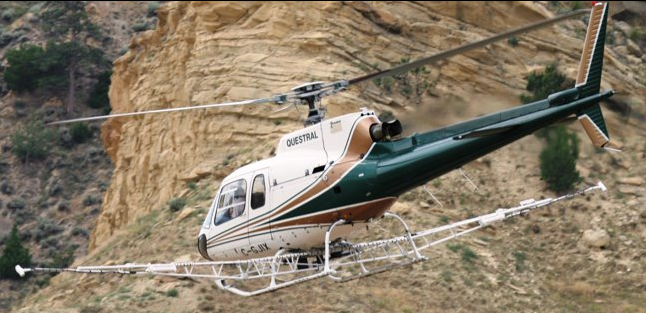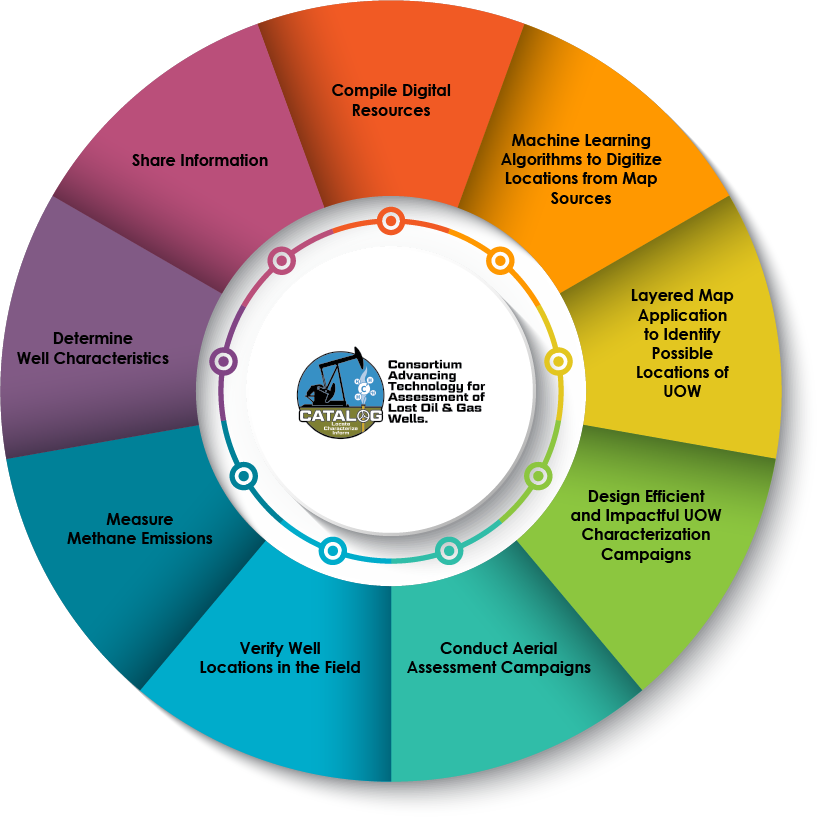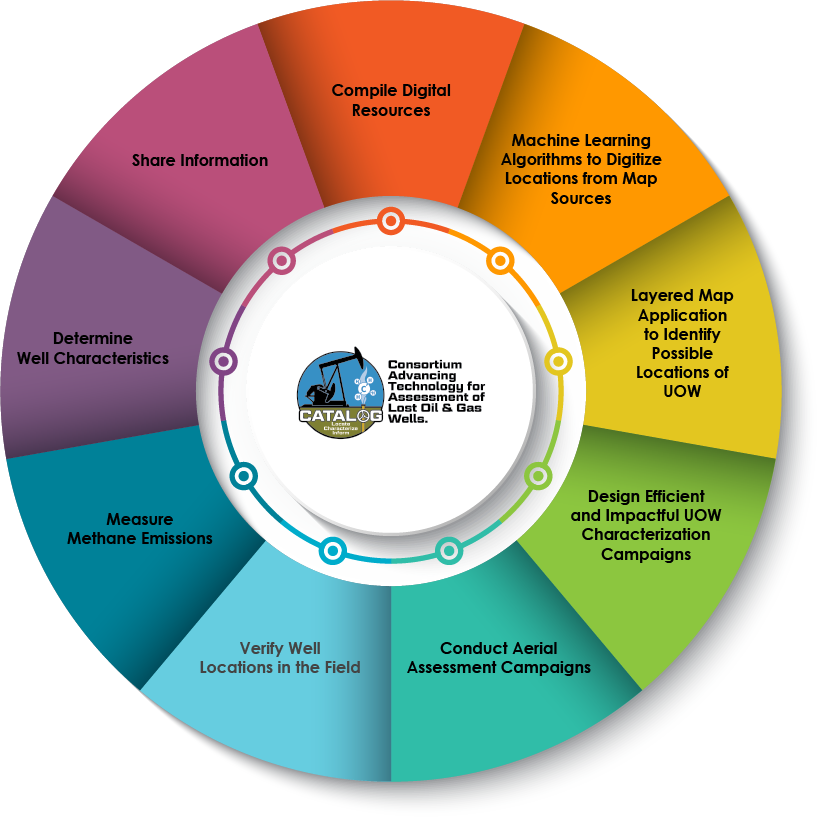CATALOG’s Progression of Activities and Associated Research Products
The Department of Energy’s Consortium for Advancement of Technologies for Assessment of Lost Oil and Gas Wells (CATALOG) is a multi-national laboratory effort developing tools and technologies to aid in the finding and characterizing undocumented orphaned oil and gas wells (UOWs). Following the steps described below, with links provided to associated papers, tools, and other research products, enables efficient strategizing for managing and mitigating risks from these challenging environmental hazards within an area of interest.


Click on a step below to learn more!


The CATALOG team has produced an open-source decision-support software tool – “PRIMA”- that makes recommendations for promising UOW characterization campaigns.
Click to read more!
1 of 18The CATALOG team has produced an open-source decision-support software tool – “PRIMA”- that makes recommendations for promising UOW characterization campaigns.
Click to read more!
2 of 18Combine the data using geographic information to generate potential targets with a higher degree of confidence.
Click to read more!
3 of 18Combine the data using geographic information to generate potential targets with a higher degree of confidence.
Click to read more!
4 of 18Unsupervised computer vision algorithms combined with advanced supervised models (U-Net) can yield locations to be compared against regulatory databases.
Click to read more!
5 of 18Unsupervised computer vision algorithms combined with advanced supervised models (U-Net) can yield locations to be compared against regulatory databases.
Click to read more!
6 of 18Conducting an aerial survey of an area of interest using magnetometry, LiDAR, or (other TBD) is an effective means of collecting data on potential well site locations and well site characterization for a large area.
Click to read more!
7 of 18Conducting an aerial survey of an area of interest using magnetometry, LiDAR, or (other TBD) is an effective means of collecting data on potential well site locations and well site characterization for a large area.
Click to read more!
8 of 18CATALOG offers expertise in planning field campaigns, collecting data in real-world environments, and developing workflows to rapidly interpret results within communities with high UOW potential.
Click to read more!
9 of 18CATALOG offers expertise in planning field campaigns, collecting data in real-world environments, and developing workflows to rapidly interpret results within communities with high UOW potential.
Click to read more!
10 of 18The CATALOG team has tested a variety of approaches including OGI, TDLAS, flux chambers, methods coupling concentration with plume dispersion modeling, and drone-based detection.
Click to read more!
11 of 18The CATALOG team has tested a variety of approaches including OGI, TDLAS, flux chambers, methods coupling concentration with plume dispersion modeling, and drone-based detection.
Click to read more!
12 of 18Hazards such as groundwater impacts, contamination, proximity to receptors, and emissions of hazardous gases like H2S, as well as physical characteristics are all pieces of desired information.
Click to read more!
13 of 18Hazards such as groundwater impacts, contamination, proximity to receptors, and emissions of hazardous gases like H2S, as well as physical characteristics are all pieces of desired information.
Click to read more!
14 of 18The CATALOG team is building a standardized, composite national well geodatabase to help identify UOWs, and share related data for surveys and the CATALOG efforts.
Click to read more!
15 of 18The CATALOG team is building a standardized, composite national well geodatabase to help identify UOWs, and share related data for surveys and the CATALOG efforts.
Click to read more!
16 of 18Systematically compile publicly available digital data at progressively smaller scales prior to embarking on field campaigns.
Click to read more!
17 of 18Systematically compile publicly available digital data at progressively smaller scales prior to embarking on field campaigns.
Click to read more!
18 of 18
































